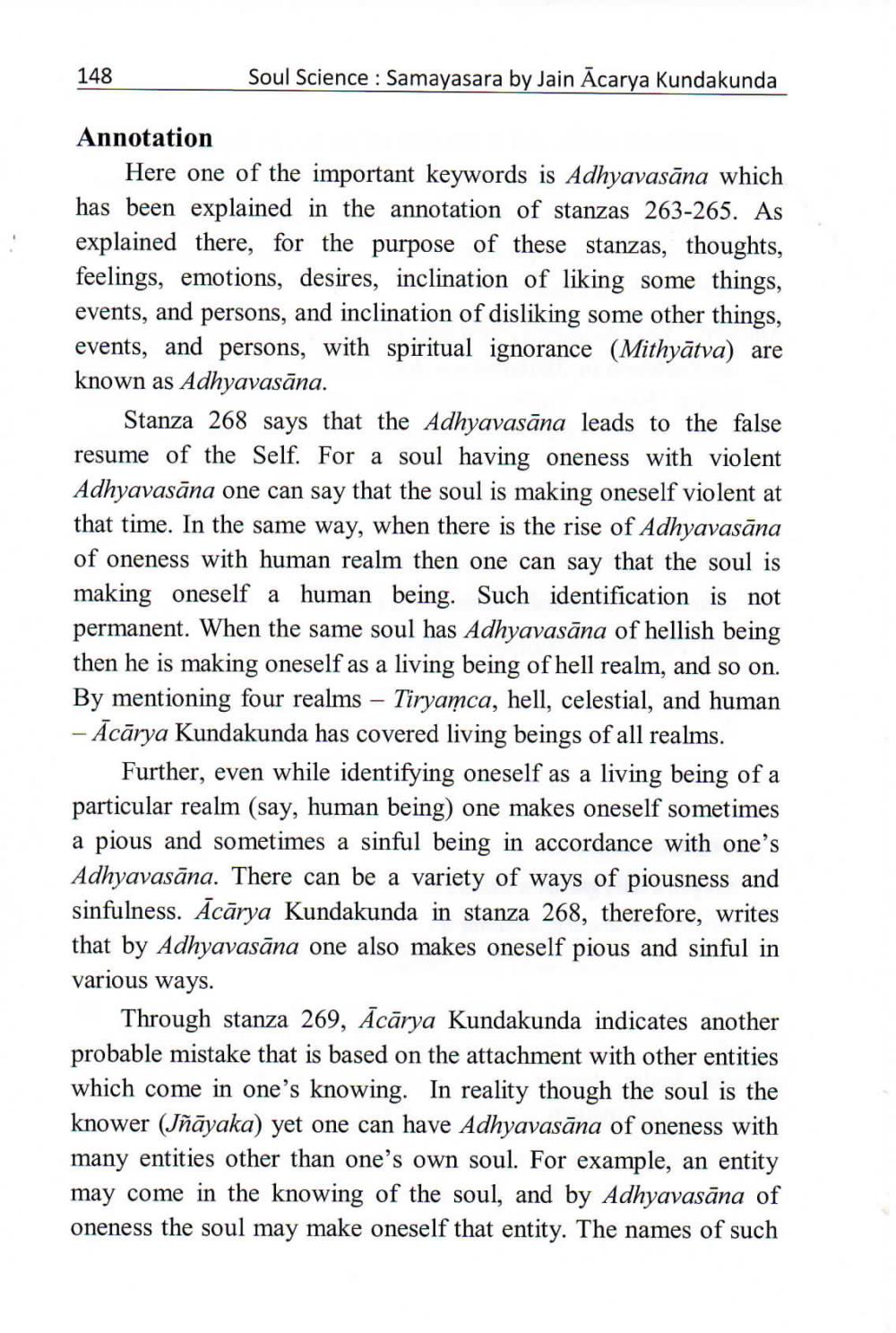________________
148
Soul Science : Samayasara by Jain Acarya Kundakunda
Annotation
Here one of the important keywords is Adhyavasāna which has been explained in the annotation of stanzas 263-265. As explained there, for the purpose of these stanzas, thoughts, feelings, emotions, desires, inclination of liking some things, events, and persons, and inclination of disliking some other things, events, and persons, with spiritual ignorance (Mithyātva) are known as Adhyavasāna.
Stanza 268 says that the Adhyavasāna leads to the false resume of the Self. For a soul having oneness with violent Adhyavasāna one can say that the soul is making oneself violent at that time. In the same way, when there is the rise of Adhyavasāna of oneness with human realm then one can say that the soul is making oneself a human being. Such identification is not permanent. When the same soul has Adhyavasāna of hellish being then he is making oneself as a living being of hell realm, and so on. By mentioning four realms - Tiryamca, hell, celestial, and human - Ācārya Kundakunda has covered living beings of all realms.
Further, even while identifying oneself as a living being of a particular realm (say, human being) one makes oneself sometimes a pious and sometimes a sinful being in accordance with one's Adhyavasāna. There can be a variety of ways of piousness and sinfulness. Ācārya Kundakunda in stanza 268, therefore, writes that by Adhyavasāna one also makes oneself pious and sinful in various ways.
Through stanza 269, Ācārya Kundakunda indicates another probable mistake that is based on the attachment with other entities which come in one's knowing. In reality though the soul is the knower (Jñāyaka) yet one can have Adhyavasāna of oneness with many entities other than one's own soul. For example, an entity may come in the knowing of the soul, and by Adhyavasāna of oneness the soul may make oneself that entity. The names of such




